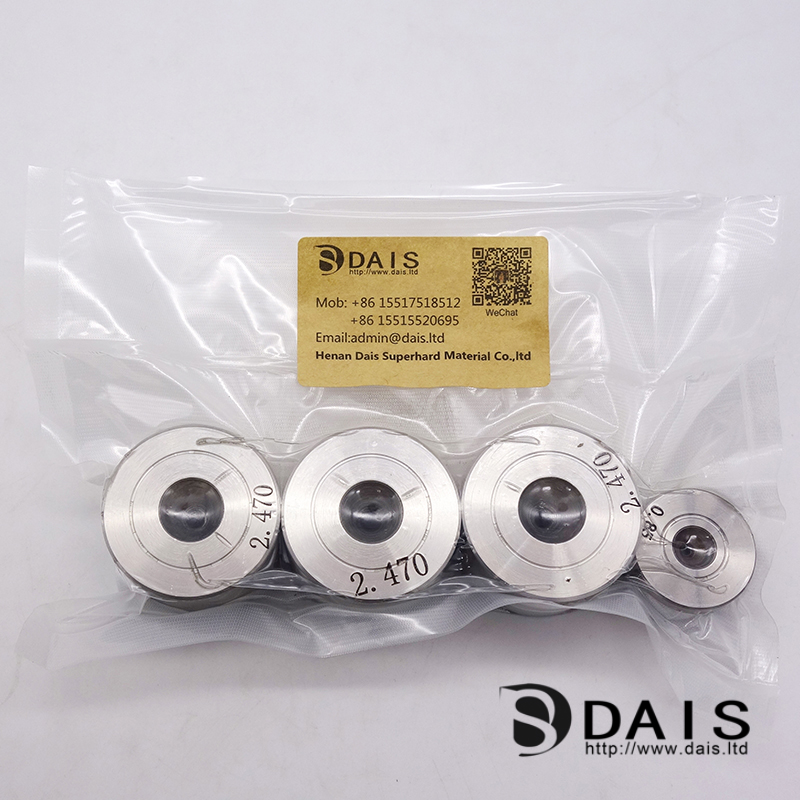Search

ADD:Building 123, Phase 3, Enterprise Base, No. 1 Lianhua Street, High-tech Industrial Development Zone, Zhengzhou, Henan, China
MOB.: +86-15517518512
MOB.: +86-15515520695
E-MAIL: admin@dais.ltd

. However, the general manufacturer cannot make a detailed analysis of the material, grain, hole type, etc. of the mold, so it is generally compared through actual tests. This article will illustrate a practical comparison method through an actual test. 1. Test conditions and methods Test conditions Drawing material: 7O steel produced by WISCO, electro-galvanized steel wire after 10 film lead quenching treatment; Lubricant: produced in Hubei, with a mass fraction of 1.3% to 1.6%; Wire drawing machine: TB4 water tank 11; Drawing speed: 10m/s 2. Comparative evaluation parameters; Steel wire test ton - ton die wear (mm) - broken wire times - average coating loss - ton wire power consumption Note: ton die wear ( Threat) is the ratio of the sum of the diameter increases of each die to the production capacity when the wire drawing die completes the test quantity; the die consumption per ton (only) is the ratio of the replaced die to the production quantity when the wire drawing die completes the test quantity. 3. Test method The weight of zinc layer is measured according to GB 2973-1-82 "Test method for the weight of zinc layer of coated steel wire: gravimetric method". Electric energy consumption is measured by GDP-Ⅱ type electric energy balance tester. 4. Evaluation methods 1. The comparison of wire drawing dies should focus on the comparative analysis of comprehensive costs such as die loss, number of broken wires, zinc layer loss, and power consumption. 2. In the case that the ton die loss is not obvious, the new concept of "ton die wear" can be used for comparative analysis. The technical application of wire drawing dies is constantly popularized, and the manufacturing technology of some coins is mainly wire drawing. So what are the advantages of wire drawing die technology? The polished lines on the die are concave, the texture pressed on the coins is convex, and the patterns on coins, including the Great Wall coins, are convex (visible with high magnification). The polishing lines on the dies are usually invisible to the naked eye, but we can see the visual effect of drawing with the naked eye on some coins because the polishing lines on the dies are new and pressed. Each stripe on the coin has a pronounced mirror effect, and the texture is dense in essentially the same direction. The mirror on the texture reflects its light into your eyes when you look at it from a decent angle. The overall effect is what we've seen brushed. If the drawing die wears out with use, the mirror effect of each streak pressed on the coin will diminish, and the visual effect of the drawing will diminish until it becomes invisible to the naked eye. Of course, it is not a visual effect of painting, it is the first coin, because each die presses a certain number of coins to clear the die, and also does not rule out polishing with various vertical and horizontal overlapping polishing in the same direction of some parts line, although dense one. The new will not show the painting visual effect, it will present another visual effect, coins pressed with this treatment die can also have the visual effect of painting lines, but this coin is no longer the first coin.